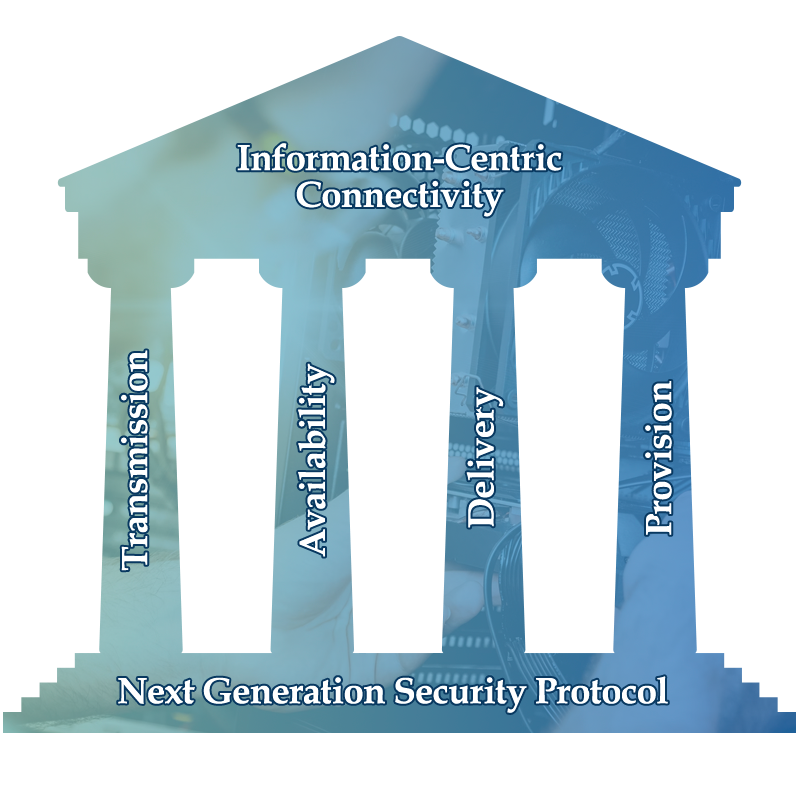C-3's technology is changing the way autonomous systems communicate. Our goal is to help advance autonomy by ensuring that information is exchanged in the safest, most secure, and most efficient way possible.
Legacy Systems Designed for Host-centric Connectivity
Singularly relies on a fully-connected end-to-end path to transport application payload bits. It is still the most prevalent technology underpinning almost all existing wireless networks. A network of autonomous systems is highly mobile, where a stable fully-connected host-to-host path is extremely hard to maintain, resulting in poor performance.
The C-3 Comm Systems' Difference: Information-centric Connectivity
C-3's innovative technology transports application data as meaningful units to wherever it reaches and whenever it can, without the need for a fully-connected end-to-end path. The result is more robust and diversified approaches for successful information delivery.
The premise of being Information-Centric is that delivering data is paramount and does not rely on a single point to handle that responsibility. As information exchanges become increasingly mobile. an information-centric infrastructure allows for more flexibility and scalability.
C-3’s Four Pillars of Information-centric Connectivity
C-3's technology is built on the foundation of next-generation security protocol. Our solutions are engineered to maintain the integrity of the information being shared through data encryption and are designed to keep information, property, and people safe and reduce the risk of mission failure.
Intra-Swarm
Efficient Information Transmission
The patterns of information exchange among a swarm or a man-machine team are often one-to-many and many-to-many. Almost all existing wireless transmission technology is optimized for the one-to-one pattern prevalent in human-to-human and Internet-based communications, which is inefficient for collaborating autonomous systems.
C-3 has long recognized this critical gap and developed unique, efficient transmission technology for swarms and small edge networks to achieve highly efficient and reliable data delivery over radio transmissions to multiple nodes simultaneously.
Command and Control
Reliable Information Delivery
|
Ultra-reliable and low-latency communications are vital for delivering critical information to and from autonomous systems. However, commercial networks only provide best-effort services for highly dynamic applications such as drone communications. C-3’s patent-pending reliable information delivery technology leverages multiple public and private networks simultaneously to achieve secure, reliable, low-delay end-to-end, beyond any single network service. |
Intra-Swarm
Maximize Information Availability
|
In highly dynamic operations, the connections among swarm members face frequent disruptions. This poses a challenge for collaborating swarm members, which require uninterrupted information flow to accomplish their tasks. C-3’s Maximum Information Availability technology proactively and opportunistically disseminates application data among swarm members. Even if the original data source is disconnected, the information is still available to others. |
Reach-back
Just-right Information Provision
|
Reach-back links transmit mission data to a network node for analysis or action. For reach-back links to and from remote swarms or among multiple swarms, the network capacity often is insufficient to transport all required application data. C-3’s Just-right information Provision technology addresses the capacity challenge by intelligently prioritizing the most critical information and enabling applications to perform software-defined in-network computation based on the real-time network status. |

